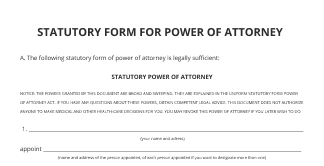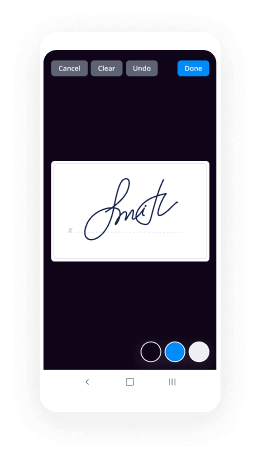Signature Investor Rights Agreement Made Easy
Get the robust eSignature capabilities you need from the solution you trust
Choose the pro platform designed for pros
Set up eSignature API with ease
Collaborate better together
Signature investor rights agreement, in minutes
Decrease the closing time
Keep important information safe
See airSlate SignNow eSignatures in action
airSlate SignNow solutions for better efficiency
Our user reviews speak for themselves






Why choose airSlate SignNow
-
Free 7-day trial. Choose the plan you need and try it risk-free.
-
Honest pricing for full-featured plans. airSlate SignNow offers subscription plans with no overages or hidden fees at renewal.
-
Enterprise-grade security. airSlate SignNow helps you comply with global security standards.

Your step-by-step guide — signature investor rights agreement
Adopting airSlate SignNow’s electronic signature any company can enhance signature workflows and eSign in real-time, giving an improved experience to clients and employees. Use signature investor rights agreement in a couple of simple actions. Our mobile apps make work on the run feasible, even while off the internet! eSign documents from any place in the world and close up trades quicker.
How to fill out and sign a signature investor rights agreement
- Log in to your airSlate SignNow profile.
- Locate your record in your folders or import a new one.
- Open up the record and make edits using the Tools list.
- Place fillable fields, type textual content and eSign it.
- List several signers using their emails configure the signing sequence.
- Indicate which users can get an completed version.
- Use Advanced Options to reduce access to the record and set an expiry date.
- Press Save and Close when completed.
Moreover, there are more enhanced features available for signature investor rights agreement. Include users to your collaborative work enviroment, view teams, and keep track of teamwork. Numerous users across the US and Europe agree that a solution that brings everything together in one holistic workspace, is the thing that businesses need to keep workflows performing efficiently. The airSlate SignNow REST API allows you to embed eSignatures into your application, internet site, CRM or cloud storage. Check out airSlate SignNow and enjoy quicker, easier and overall more productive eSignature workflows!
How it works
airSlate SignNow features that users love
See exceptional results signature investor rights agreement
Get legally-binding signatures now!
What active users are saying — signature investor rights agreement
Related searches to signature investor rights agreement
E signature investor rights agreement
This is you, this is your startup, these are your investors, and this is your Shareholders Agreement. The SHA is a document that is signed by all shareholders and effectively manages how the control of the company is split among them. Usually, the bigger the company, the longer the SHA and the harder to understand for mere mortals without a PHD in law. Anything that's written in the SHA is subject to negotiation. Therefore, be careful to consider these five things before you sign. When a company raises cash from new investors, existing shareholders get diluted, meaning their percentage hold of the company is diminished, as the new investor receives newly issued shares. If you've seen Part 1 (if you haven't, watch it now), you might remember how I said that every shareholder gets diluted proportionally to their share in the company. So in our case, with a new investor coming in at 25 percent, if you own 40 percent you lose 10, if you own 20 percent you lose 5. Well, I lied. Dilution is NOT always proportional. The SHA might include an anti-dilution clause, which exempts a certain shareholder from dilution completely by simply granting him new shares when a capital race takes place. And if a man isn't diluted, because of the way percentages work, then others must be diluted even further in his stead. In one famous example, the SHA included a clause which granted anti-dilution to all shareholders, with only one certain shareholder taking the hit. "Mark!" "He's wired in." "Sorry?" "He's wired in." "Is he?" "Yes." crash "How 'bout now, you still wired in?" "Security." "You issued 24 million new shares of stock. " "You were told that if new investors came along -" "How much were your share's diluted? How much were his?" "What was Mr. Zuckerberg's ownership share diluted down to?" "It wasn't." "What was Mr. Moskovitz's ownership share diluted down to?" "It wasn't." "What was Sean Parker's ownership share diluted down to?" "It wasn't." "What was Peter Thiel's ownership share diluted down to?" "It wasn't." "And what was your ownership share diluted down to?" "0.03 percent." To prevent this from happening to you, always watch out for dilution in your SHA. The Board of Directors is to a company much like a Parliament is to some democracies. It elects the CEO much like the German Parliament elects the Chancellor. And they can influence and/or veto decisions made by the CEO. Note that the board is not involved with day-to-day operations and not to be confused with the Management or Executives of a company, even though some of them will usually also be board members. But in general, who gets to determine the board members? Much like voters determine who's in Parliament, shareholders determine who's in the board. And in the case of startups and private companies, these are usually the founders, investors, and others such as employees, friends, and family. But not every vote bears equal weight, once again, much like in certain democracies. ba dum tss The number of board seats a shareholder can determine is usually vaguely correlated to the number of shares they hold, but also to their standing inside the company and their negotiation skills. For example, in a young private company with five board seats, the co-founder and CEO might determine two of them while only holding a 20 percent stake, because he's so charismatic and likeable and important to the business, while another founder who also owns the same 20 percent gets to determine none. A big investor who holds 30 percent determines another two, while one early investor with only a 10 percent stake determines another one. Others, even though adding up to a total of 20 percent, doesn't speak with one voice and is out of the loop. Once it's agreed who can determine how many board members, then that's what's written into the SHA. And once it's signed, the deal is sealed. So you better pay good attention to the Board of Director's section. Say you invested some money into a friend's startup at an early stage, and now you hold a small stake in it. The lead investor is some famous guy who went all-in on your friend's idea and holds a majority stake in the company, including a majority of board seats. Things have been going well, and one of the big guys shows some interest in the startup, so much so that they want to buy control of the business. Good news for the big guy! The only one they have to talk to is Mr. Majority over here. He can now exit his controlling stake for a sweet profit over his initial investment. And you and the other minority shareholders can go f*** yourselves, right? Not so! The Tag-Along clause puts a big asterisk on that deal. It gives the minority stake the right to sell the same portion of their stake at the same price and conditions. And if the big guy just wants to buy control, but not the whole company, then they're buying from everyone equally. So if you're a minority shareholder in a company, be especially sure to have your Tag-Along rights included before you sign. Now maybe you're one of the big investors and your exit candidate wants to buy, not just control, but the entire company. You think it's a great deal, but those naggy small investors don't agree and tell you "We won't sell our shares!" And you tell them, "Yes, you will!" And they say, "Make us!" Turns out, you can, thanks to the Drag-Along clause. The Drag-Along gives the majority shareholder the right to force minority shareholders to sell their shares at the same conditions as them. So if you happen to hold a big stake in a small company, the Drag-Along clause will be important to you. This is you, this is your startup, and these are your employees. Employees need incentives, and what better way to incentivize them than making them co-owners of the business? "Here you go! Now I can pay you half your salary while also making you work harder!" But where do these shares come from? Who gave away some of their participation? The answer to this question brings us full-circle back to the first topic: Dilution. When a capital race takes place, it's decided how many shares should be newly created and set aside, just to distribute amongst the foot soldiers: the data crunchers, the sales guys, the managers. Where's the catch? Whenever shares are newly created from one end, dilution must occur somewhere on the other side. So if the share option pool is filled up to 10 percent, then all existing shareholders will be diluted by those same 10 percent of their share. But it gets more tricky than that. As discussed in 1, some shareholders might cover themselves against share option pool dilution. The new investor, for example, made it a condition to his juicy investment that he won't take a hit from share option pool dilution in this round. Bad luck for the rest of you. Oh look, the co-founder also negotiated his way out of share option pool dilution, because he didn't get any board seats, after all! All of this haggling is part of the process which might be slipped by you if you don't know what to look for. But in the case of at least five things, you now do! Thanks for watching! Creating these videos has become a very time-consuming hobby of mine, and your support has just been spectacular! If you want to help me even further improve quality and upload frequency, then please check out my brand-new Patreon page. Subtitles by the Amara.org community
Show more











































